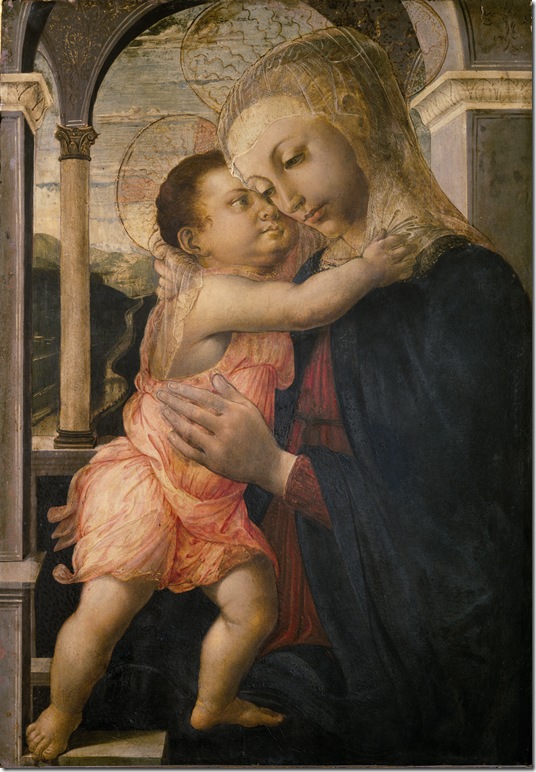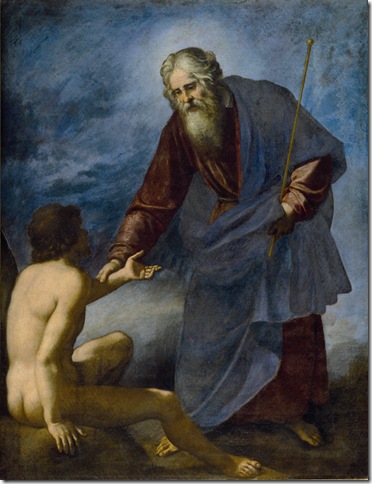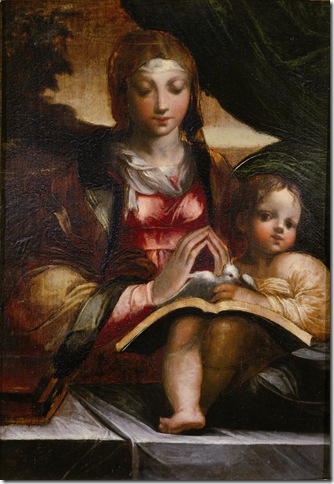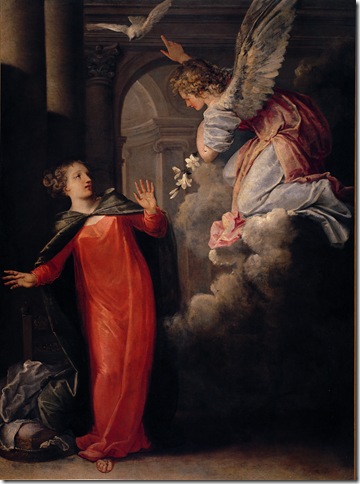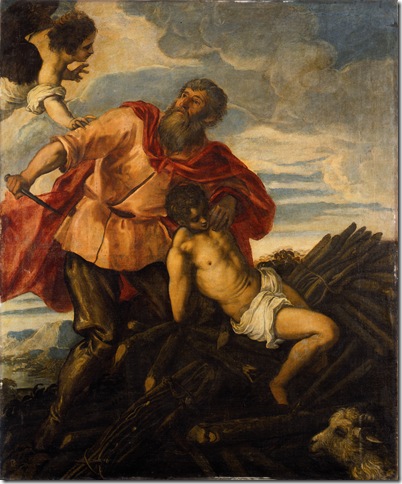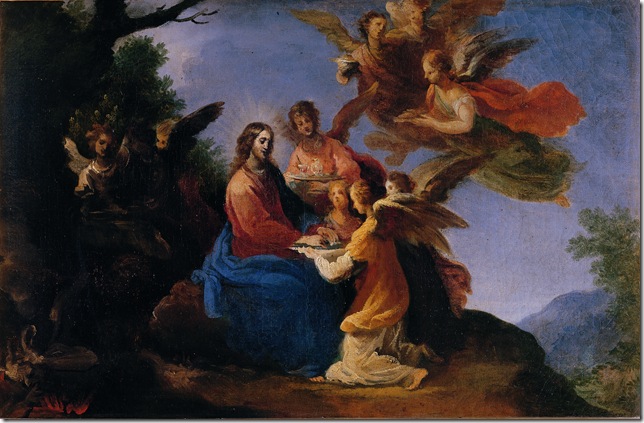Any art exhibit containing “Old Master” in its title takes the gambling out of the museum visit. There is no question that the art is going to be good. And so it is with Offering of the Angels: Old Master Paintings and Tapestries from the Uffizi Gallery, in which the Museum of Art Fort Lauderdale has given us an easy one, with plenty of drama and musculature.
More than 40 works, normally housed in the Uffizi Gallery, one of the oldest and most prestigious art museums of the world, are stopping by a few American cities following successful openings in Florence, Madrid and Barcelona a couple of years ago. Fort Lauderdale is the first stop.
The works, including one recent restoration of a Titian and a work by Sandro Botticelli, take us from the creation of Adam, the original sin and expulsion from Eden to the birth, crucifixion and resurrection of Christ. We find annunciations, nativities and last suppers, all by skilled artists of the Renaissance and Baroque periods. Not a bad way to start the year.
A seemingly deteriorated God extends his right arm toward a sitting nude man who seems shy and unable to walk. With his long white beard and wrinkles, this God appears less regal and closer in physical appearance to man. His soft, forgiving semblance seems to be saying I do not bite. This is Jacopo Da Empoli’s The Creation of Adam (1632). It marks the beginning of the show.
Following it are two representations of The Original Sin, the first of which is by an unknown Florentine painter from the 16th century. Adam, sitting on a rock to the left, is about to receive the apple from Eve, who is standing to the right. The one single tree of knowledge appears in the center of the panel, forming the familiar triangle composition we will see many times here. Eve’s long voluptuous hair can almost be touched by the serpent-like devil curled up around the tree. The depiction of evil includes bat wings, long nails, horns and pointy ears. Also, notice the light focusing on the Roman-Greek inspired bodies of Adam and Eve while the creature watching them from the tree is in darkness.
This take is very different from the one dating to the early 17th century by Frans Floris. This Original Sin on a square canvas features a darker mood as well as a more realistic approach to the bodies. The composition abandons the triangular format for a more relaxed, sensual stance. Eve is placed closer to Adam, who, again, is leaning on a rock playing the more passive role in accordance with the story. He has his left arm around Eve, who features porcelain skin and a hint of smile. In her face there is no sense of regret for what she is about to do. Even though the apple is intact and Adam has yet to grab it from her hand, there is no doubt the snake smiling in the dark has already won. The misty distant landscape depicts other animals and fruits. The whole spectacle is sort of chilling.
For a warmer, rosy-tone work, turn to The Expulsion from the Garden of Eden (circa 1634) by Giovanni Mannozzi (aka Giovanni da San Giovanni), who depicts the moment of shame in lighter colors.
In Madonna with Child, Young Saint John the Baptist, Dominican Monk and Angels by Andrea Piccinelli (Il Brescianino), one of several Madonnas with Child here, a young Saint John, on the lower right, holds a scroll where Jesus’ mission is written down. A monk pointing to the sky with his index finger emphasizes the divine nature of that mission while looking directly at us. As soon as it makes eye contact, the work connects with the viewer and can easily make him/her feel as Tom Hanks does in Angels and Demons. Could the artist be trying to say anything else? Where else have we seen fingers pointing in some direction? For starters, in Leonardo da Vinci’s Virgin of the Rocks (the Louvre version), The Last Supper and his last painting, John the Baptist. The straightforward obvious gestures do little to appease the sensation of mystery filling the room –and our heads.
Facing the grandeur of some of these paintings, especially the larger ones, one can feel very small and powerless. Better to take a step back and fill the space typically reserved for interpretation of abstract and contemporary works, with humility and admiration. The museum has graciously placed benches for longer contemplation. Use them.
Pieces such as Pieta with Saint John the Baptist and Saint Catherine of Alexandria (circa 1621), by Fra’ Semplice Da Verona (Il Cappuccino Veronese) no doubt deserve your time. In it, the body of Christ appears resting on a white cloth; wound marks are seen on his hands. John the Baptist and Catherine of Alexandria accompany Mary in her grief. Mary extends her arms over the body telling humanity “look at what you have done.” Notice the lamb or ram in the foreground looking toward the lifeless body. This time, the animal has not replaced the human sacrifice, as we have seen earlier in the show.
Hanging in the first gallery room is Tintoretto’s Sacrifice of Isaac, which features the moment in which an angel stops Abraham from following God’s command and killing his son. The father, about to strike with the knife, listens to the angel as he relieves him of the terrible promise. The ram later takes Isaac’s place. Our eyes travel from the angel, on the upper left, to the ram, lower right, in a sharp diagonal line.
Do not walk out without stopping by Alessandro Turchi, aka L’Orbetto’s Christ in Limbo (circa 1620). Here we get Christ against a dark unpainted background and suspended in the air. He is holding a white banner and is accompanied by Adam and Eve. Holding a broken cross on the right is St. Dismas, the thief who was promised a seat next to Christ in Heaven. On the lower left is Hell. For me, it was the most unexpected piece of the entire show.
It is not easy to admire a value which one is not convinced of and that feels rather forced, because of popularity or loyalty or obligation. Offering of the Angels has that reassuring aroma of the ancient. Admiring its value should come easily for those who visit it from now until April 8.
Many times during the show I wanted to touch these creations to see if they were indeed real, but photographs are not allowed, not even pens; let alone touching. I thought about Eve and the way she must have felt, being around such a gorgeous forbidden fruit.
I must admit I was jealous when the National Gallery in London announced its fantastic exhibit on the master of the great masters: Leonardo da Vinci. Unable to fly there, I resigned myself to reading The Guardian’s interactive guides of his sketches and paintings.
Now, having seen the drama, the colors and compositions in Offering of the Angels, it would be a sin to feel anything but fortunate.
Offering of the Angels: Old Master Paintings and Tapestries from the Uffizi Gallery, is showing until April 8 at the Museum of Art Fort Lauderdale. Tickets: $18 adults, $15 for seniors and military, $10 children. Open Tuesday, Wednesady, Friday and Saturday from 11 a.m. to 6 p.m., Thursdays from 11 a.m. to 8 p.m., Sundays from noon to 5 p.m. Call 954-525-550o or visit www.moafl.org.
